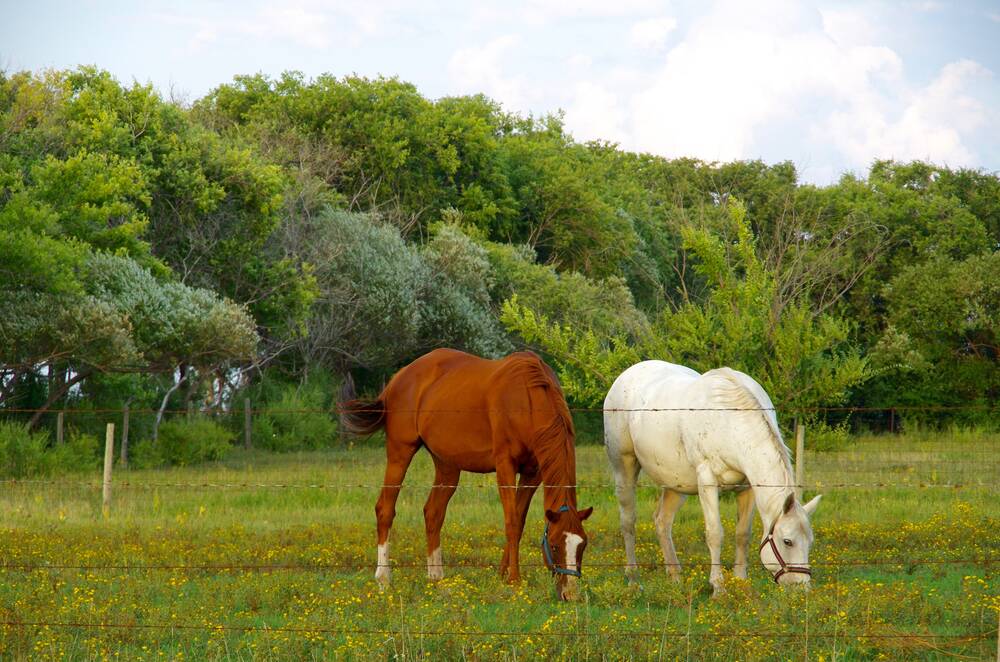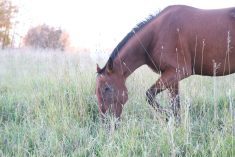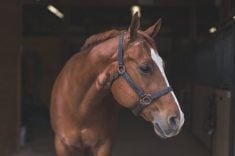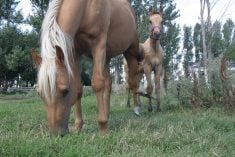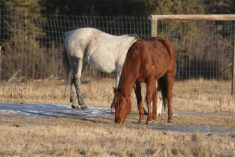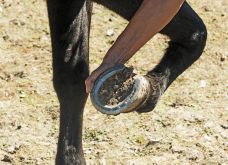The number of serious wounds suffered by horses often rises at this time of year, so this is an ideal time to discuss factors that typically contribute to injuries.
Ensuring a safe stable, paddock and pasture environment seems obvious, but it bears repeating. Regularly inspect for hazards such as sharp objects, protruding nails, broken boards, wires, unstable footing and other dangers.
Be aware of the limitations and risks of certain fencing such as square tube panels, high-tensile wire fences, barbed wire and page wire, especially when horses are under pressure or interacting with other horses across the fence line.
Read Also

Lactanet moves to monthly on dairy genetic reports
Lactanet is now publishing monthly dairy genetic evaluations, giving dairy farmers more up-to-date data to make breeding decisions.
Horses should be conditioned to navigate complex and enriching environments. Horses that learn to assess and traverse their surroundings safely are better prepared to handle various terrains and conditions at a range of speeds and paces. Exposing horses to uneven ground, water bodies and other obstacles, even the occasional gopher hole, can improve body awareness and help avoid injuries. This is especially important for young ones.
Horses are innately curious. That may lead them to explore sharp objects, tight spaces or unstable structures.
Conversely, horses confined to more sterile environments, without sufficient mental or physical stimulation, may develop destructive behaviours such as kicking walls or gnawing on objects, potentially causing self-inflicted injuries.
Adverse weather like lightning can cause horses to run blindly, increasing the risk of collisions or entanglement. Heavy rainfall can make footing unstable. These situations may require extra management to ensure safety.
Horses may bolt, rear or jump suddenly, leading to accidents. Their instinctive flight response makes them susceptible to impulsive decisions under pressure, often resulting in collisions with obstacles.
Gentle handling and consistent training can mitigate this by teaching horses how to make better decisions when stressed or under pressure. Calm handling and gradual exposure to new experiences helps prevent spooking and sudden movements, reducing the risk of injury.
This approach makes horses safer toward themselves, more confident and easier to manage should they become injured. On the flip side, rough, unclear or inconsistent handling can increase nervousness and reactivity, raising the risk of injury for both horse and handler.
Quality foundational training allows horses to apply learned behaviours in real-life situations. A well-educated horse that encounters a wire tangle is more likely to yield to the pressure and wait for assistance, resulting in a better outcome.
Horses confined to stalls or small pens often release pent-up energy exuberantly and blindly when put in a larger space. This is more intense in horses fed high-energy rations and given insufficient exercise or work. These explosions of expression can result in open wounds and other musculoskeletal injuries. Regular exercise and ample space for movement are straightforward solutions.
Horses establish social hierarchies through interactions involving movement and displays of dominance. This can lead to bites, kicks and injuries from collision with obstacles. Supervising herd dynamics and managing aggressive behaviours are essential to minimize these risks, especially during turnout and when introducing new horses to a group.
It’s highly recommended that you remove horseshoes when introducing horses. Kicks from a shod foot can cause significantly more damage.
Controlled introductions over sturdy fence lines until both parties settle can prevent severe conflicts and injuries during initial interactions. These fence-line introductions may last for hours, days or even weeks, depending on the individuals.
Again, providing ample space is key when mixing unfamiliar horses. They need room to establish their social order without tight corners or corridors where a less dominant horse can be trapped without escape. Resource guarding and overcrowding can provoke aggressive behaviour among horses if there isn’t enough food, water, space or areas for loafing and bedding relative to the number of animals.
If an individual horse continues to display unruly behaviour, it may be necessary to separate them from the group.
Regularly inspecting the condition and fit of all tack and equipment can prevent unexpected events, accidents and injuries during work and exercise.
This principle also applies to maintaining a horse’s hoofs. Well-kept feet give the horse a better sense of its surroundings and greater stability in motion.
By implementing effective and vigilant management practices, providing horses with foundational life skills for domestic settings and creating a safe and enriching environment, horse owners can help ensure their horses remain safe and injury-free.


